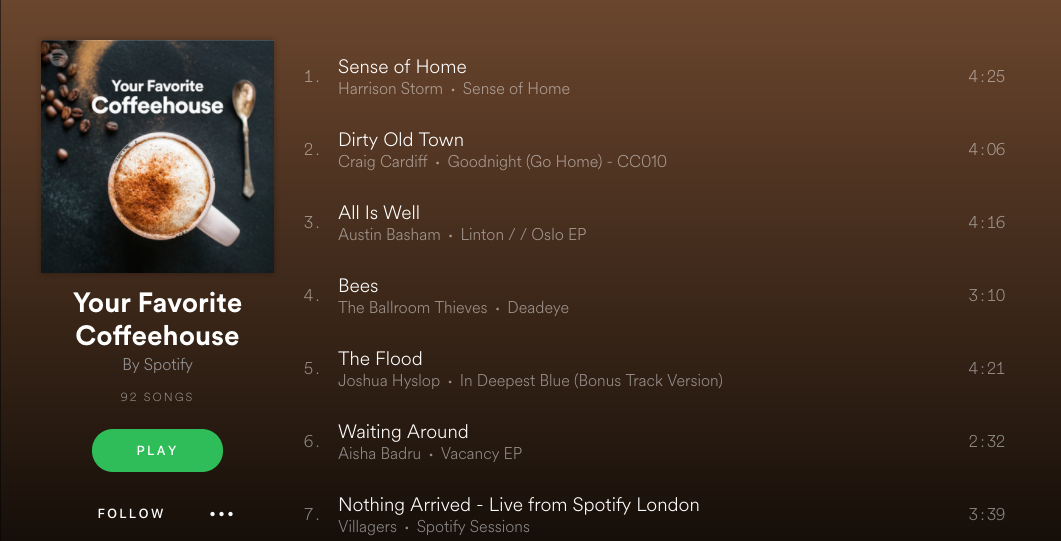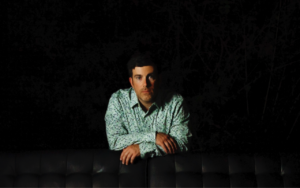
NOTE: The CD Baby Pro Publishing service was discontinued as of August 8th, 2023. Any paid release which was signed up for CD Baby Pro Publishing prior to August 8th, 2023 is considered a Legacy Pro release and will continue to receive Pro Publishing services. CD Baby now offers a new expanded suite of revenue amplifiers called “CDB Boost” instead.
A song placement on a big Spotify playlist can get you hundreds of thousands (if not millions) of streams and — contrary to what you’ve probably heard — generate real money.
How many thousands of songs are being released every single day though? What are the chances your song will find its way to the curator of a popular playlist all on its own? Have you proven that you should be taken seriously on the platform?
Building your playlisting resume on Spotify
There are some steps you need to take in order to increase your chances of being noticed by Spotify’s in-house editorial team or their algorithm. Also, before you reach out to the curator of any prominent Spotify playlist, you’ll want to build your playlist resume first. That means you should:
- Become a verified artist on Spotify
- Build some of these kinds of Spotify playlists on your own and make sure they’ll show up in a search
- Get your music onto some of these playlists by collaborating with friends, fellow artists, and your own fans
- You can also get your unreleased music onto Spotify playlists by submitting to their editorial team.
Getting music onto playlists outside of your immediate circle of influence
Okay, let’s imagine you’ve already gone though all the steps listed above. Now that you’ve laid a solid foundation and done as much DIY playlisting as possible, it’s time to reach out to other playlist creators.
But start slow: approach independently curated playlist creators first. After some success you can work your way up to the big playlist curators.
Who should you be pitching to?
It’s impossible to recommend specific playlists in a blog post like this; it differs dramatically for every genre. But rest assured that opportunities are out there — hundreds (even thousands) of great playlists exist for every genre.
No matter the genre though, the same pitching principles apply:
- Google is your friend — A good genre playlist (and the contact info for its creator) usually isn’t hard to find online. Do a simple search and you’ll be on your way.
- Do your research — Browse around. Get lost on Spotify. Ramble from playlist to playlist. Takes notes on the ones that really leave their mark. What kinds of artists and songs do they include? Which of your songs might fit best on that playlist?
- Follow the playlists you want to pitch to — Be a good citizen. Don’t just spam them. Follow them. You like the music anyway, right?
- Build a relationship with the playlist creator — Follow them on Twitter or Facebook if they have a profile. Leave comments on their blog. Communicate. Compliment.
- …THEN pitch your music — Once you’ve shown yourself to be interested in and knowledgeable about the kind of music the playlist features, write to the curator and politely (and briefly) suggest one of your songs that’d be perfect for their playlist.
- Cross your fingers — If they add your song, awesome. If they say no thank you, don’t unfollow them or get snippy. Your NEXT song might be the winner!
More playlist activity, more listeners
Once your music begins to perform well through your own branded playlists, collaborative playlists, and independently curated playlists, the Spotify algorithm may begin to suggest your songs to Spotify’s in-house editorial team. That’s the real path to getting a song onto a playlist such as “Your Favorite Coffeehouse” or “Fresh Finds.”
Discover Weekly and Release Radar
Spotify’s algorithm might also begin to serve your music automatically to fans via personalized playlists such as Discover Weekly, updated every Monday with up to two hours of new songs and relevant tracks from artists the user has shown interest in.
This is another reason why it’s crucial to get your fans to follow you on Spotify, since your new releases could be automatically added to your followers’ Discover Weekly playlists. The more followers you have, the more fans who’ll never miss out on your new tunes.
In addition to encouraging your fans to follow you and engage with your music on Spotify, another way to boost your chances of your songs being seeded to Discover Weekly playlists is to release music more frequently.
Don’t just think in terms of albums
An album only gives you ONE chance to get your new music out there (and onto a Discover Weekly playlist). Instead, think about more frequent releases (singles and EPs) that will put your music onto fans’ radars far more often.
If you release a series of singles that are eventually included on an album, those songs can retain the same ISRCs (unique identifier codes for individual songs) as long as the sound recording is identical. That means that the play-counts for the previously released songs on that new album will automatically carry over.
Money, Money, Money: The streaming license fee, plus publishing royalties
Any of these more prestigious placements should boost your plays AND streaming income significantly. When that happens, not only will you be paid for each stream through your distributor (hopefully CD Baby), but — if it’s your original music — you’ll also generate publishing revenue in the form of mechanical royalties.
This money is owed to you as the songwriter. However, these royalties can be difficult or impossible for you to collect on your own from royalty collection societies without the help of a publishing rights administrator such as CD Baby Pro.
For every $100 in streaming revenue you generate, you’re owed, on average, an additional $15 in publishing royalties. It’s YOUR money. With CD Baby Pro, we’ll help you claim and collect what’s yours.
Sign up today at http://members.cdbaby.com/pro.aspx.
Bonus tips to aid your playlisting efforts
Let the outside world in
Spotify isn’t an island unto itself. What you do in the “real world” and elsewhere online matters to listeners, playlist curators, and Spotify’s team. So be sure to tour, make videos, get your music reviewed on blogs, or anything else that helps you grow your fanbase outside of the streaming platform. That momentum and buzz will drive playlist activity and streaming engagement within Spotify.
Don’t ignore Facebook
A huge number of Spotify users have integrated their Spotify accounts with Facebook to share their listening habits, favorite playlists, and more. If your Facebook page is a ghost town, and if your engagement on Facebook is low, that looks bad to not only those listeners, but also Spotify.
The “music industry” cares about your stats
Numbers create an impression, and impressions matter. If you’re looking to attract label attention, a manager, a booking agent, or a publisher, an impressive play-count on Spotify, along with a robust history of playlist activity, is one way of demonstrating you’re worth investing in.
What are your Spotify “stats” as of today?
If you’re distributing music through CD Baby, you can view Spotify trending reports and analytics within your members account.
These reports, updated daily, give you a detailed look at:
- Total streaming activity
- Your best performing tracks
- Demographic info for your fans (age, gender, device usage, etc.)
- Where your fans live
- Which playlists are featuring your music
- And more
This data can be super helpful when it comes to assessing the effectiveness of your Spotify promotions, online marketing, and playlisting strategy, as well as help you make smarter decisions when it comes to tour routing, targeted ads, and more.
Well, hopefully this info gives you a framework from which to build your Spotify resume, get your music onto playlists big and small, make more fans on the platform, and earn more streaming money.
Have you gotten a big playlist placement for your songs on Spotify? If so, let us know all about it in the comments below.
